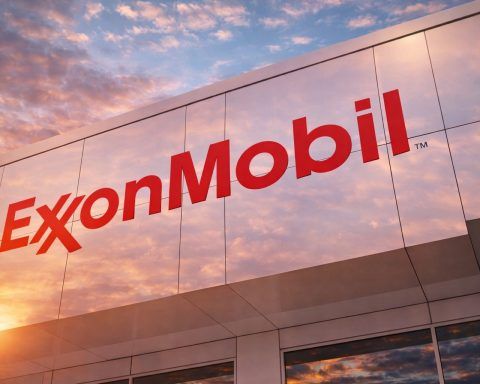UnitedHealth Group Incorporated (NYSE: UNH) traded around $330 per share on Friday, November 28, 2025, essentially flat on the day after a volatile year marked by regulatory scrutiny, Medicare Advantage cuts and a high‑profile leadership shake‑up. [1]
Despite today’s muted move, the stock is still down roughly 46% over the past 12 months, a dramatic comedown from late‑2024 highs, even after a sharp bounce off its August 2025 lows. [2] Yet UnitedHealth’s latest quarterly results showed solid revenue growth and a raised 2025 earnings outlook, leaving investors debating whether UNH is now a value opportunity or a value trap.
This article looks at UNH’s price action today, the fundamental backdrop after Q3 2025, and the key catalysts and risks that could drive the stock from here. It is informational only and not financial advice.
UnitedHealth Stock Today: Price Action on November 28, 2025
As of the latest trades on November 28, 2025, UnitedHealth Group shares:
- Were changing hands at about $329.9 intraday
- Opened near $331.7 and have traded in a tight intraday range around $329–332 [3]
- Are seeing volume in line with their typical daily average of roughly 2–2.5 million shares [4]
In a longer‑term context:
- UNH’s 52‑week range currently runs from $234.60 (low, hit in August 2025) to $622.83 (high, set in December 2024). [5]
- At around $330, the stock trades about 47% below its 52‑week high, but roughly 41% above the 52‑week low, underscoring how severe the earlier sell‑off was and how partial the recovery has been. [6]
Options markets were recently pricing in an expected move of about ±$3.8 (±1.1%) around the November 28 weekly options expiry, signaling that traders were braced for only modest near‑term volatility despite the noisy headline backdrop. [7]
Q3 2025 Earnings: Revenue Strength, Margin Pressure
The turning point for sentiment this quarter came on October 28, 2025, when UnitedHealth reported third‑quarter 2025 results:
- Revenue: $113.2 billion, up 12% year over year
- GAAP EPS: $2.59
- Adjusted EPS: $2.92, ahead of consensus expectations
- Net margin: About 2.1%, reflecting continued margin compression
- Medical care ratio (MCR): 89.9%, elevated but in line with what management had guided after earlier cost surges [8]
Crucially, UnitedHealth raised its full‑year 2025 outlook to:
- At least $14.90 in GAAP EPS
- At least $16.25 in adjusted EPS, above prior guidance and ahead of analyst estimates [9]
On the membership and segment side:
- The core UnitedHealthcare insurance arm generated $87.1 billion in Q3 revenue, up 16% year over year.
- UnitedHealthcare served about 50.1 million people in the U.S., up roughly 800,000 members versus a year earlier. [10]
- Optum, the health services and pharmacy benefits segment, continued to grow as well, though its margins and growth trajectory remain under close investor scrutiny. [11]
Taken together, the Q3 print reassured markets on the top line and showed that utilization trends were stabilizing after a year of unexpected cost spikes in Medicare Advantage and other businesses. However, the compression in profit margins and the still‑elevated MCR kept concerns alive that the company is having to “spend its way” back to growth. [12]
Medicare Advantage Cutbacks: Shrinking to Grow?
One of the biggest drivers of both fundamentals and sentiment this year has been UnitedHealth’s Medicare Advantage strategy. Facing higher medical costs, tighter government payments and regulatory pressure, the company is deliberately pulling back from less profitable markets.
Key moves going into 2026 include:
- Exiting Medicare Advantage plans in roughly 109 U.S. counties across about 16 states, affecting an estimated 180,000 members as those plans are discontinued. [13]
- Signaling a net reduction of about 1 million Medicare Advantage members in 2026, even as UnitedHealth remains by far the largest MA provider in the U.S. [14]
- Raising rates and trimming unprofitable Affordable Care Act (ACA) offerings, with some reports pointing to mid‑20% premium increases in certain ACA markets to restore margins. [15]
UnitedHealth has framed these changes as “strategic adjustments”, arguing that exiting low‑margin or loss‑making geographies will allow capital to be redeployed into higher‑return markets and products. [16]
For shareholders, the implications are nuanced:
- Near term, membership losses can weigh on headline growth and invite political backlash, especially with hundreds of thousands of seniors forced to switch plans.
- Medium term, if executed well, these exits could lift margins and make UnitedHealth’s earnings base less volatile, particularly if utilization and reimbursement trends stabilize.
The Q3 guidance increase suggests management believes it can offset the revenue impact with better pricing, mix and cost control, but markets are still in “show me” mode.
Regulatory and Legal Overhang: DOJ, Billing Practices and Lobbying
Another central theme for UNH in 2025 has been federal scrutiny of its Medicare billing and market power.
Key developments:
- In May 2025, reports emerged of federal criminal and civil investigations by the U.S. Department of Justice into aspects of UnitedHealth’s Medicare Advantage billing and related practices, adding to an already‑difficult year for the stock. [17]
- UnitedHealth has also faced continuing antitrust scrutiny around its acquisitions, including conditions tied to its Amedisys home‑health deal that required significant divestitures to address competition concerns. [18]
- The company’s lobbying spend is on track for a record in 2025, with nearly $8 million spent through mid‑year as it seeks to influence Medicare Advantage policy and defend its business model in Washington. [19]
While no final findings or penalties have yet been announced, the ongoing DOJ investigations represent a material overhang. Potential outcomes range from fines and settlements to changes in coding and billing practices that could pressure margins for years.
For investors, this means:
- Headline risk remains high – any fresh leak or official update from regulators can trigger sharp moves in the share price.
- The regulatory narrative is now a core part of the valuation debate, not a side note: many valuation models now include elevated “policy risk” discounts for UnitedHealth and its peers. [20]
Leadership Reset: Hemsley Returns and Insiders Buy
Against this backdrop, UnitedHealth has attempted to reset confidence at the top.
In May 2025, longtime leader Stephen J. Hemsley returned as chief executive officer, replacing Sir Andrew Witty, who stepped down for personal reasons after a series of guidance cuts and a rare earnings miss. [21]
Key leadership‑related developments:
- Hemsley is widely credited with building UnitedHealth’s earlier growth engine, particularly the Optum business, during his first stint as CEO from 2006 to 2017. [22]
- His new pay package includes a $1 million annual salary and a one‑time $60 million stock‑option grant that vests over three years, designed to align his incentives firmly with shareholder recovery. [23]
- In a highly watched show of confidence, Hemsley personally bought roughly $25 million of UNH stock in May, while other senior executives and directors also made multi‑million‑dollar purchases, sending the shares up more than 8% on the day of the disclosures. [24]
In his remarks to shareholders and the market, Hemsley has acknowledged that “we have gotten things wrong” and has emphasized a back‑to‑basics focus on underwriting discipline, pricing and restoring investor trust. [25]
For UNH stock, the leadership change and insider buying have become central to the turnaround narrative: bulls argue that a proven CEO with significant personal capital at risk can steer the company through regulatory storms, while skeptics worry that even a strong operator may struggle under the weight of DOJ investigations and structural Medicare pressures.
How Wall Street Sees UNH: Valuation, Targets and Sentiment
Despite this year’s turmoil, analysts remain broadly constructive on UnitedHealth’s long‑term prospects.
Current snapshot from major data providers:
- Trailing P/E ratio: around 17x
- Forward P/E: just under 20x
- Dividend yield: roughly 2.6–2.7%, with a long history of regular dividend growth [26]
- Consensus rating: “Buy” from about 25–30 covering analysts
- Average 12‑month price target: about $408, implying ~23% upside from current levels. [27]
Recent notable analyst and market commentary:
- JPMorgan earlier this year raised its price target to $418 and reiterated an “Overweight” rating, framing the post‑sell‑off valuation as attractive relative to long‑term earnings power. [28]
- More recently, Deutsche Bank downgraded UNH from Buy to Hold after a sharp rebound from August lows, arguing that much of the near‑term recovery may already be priced in but still raising its target to $333, close to where the stock trades today. [29]
- Multiple outlets, including AP and Investopedia, have characterized Q3’s beat and guidance raise as evidence that UnitedHealth may have seen an earnings trough in 2025, with management targeting renewed growth in 2026 and acceleration into 2027. [30]
In other words, consensus still expects UNH to grow, but now with an explicit “higher risk, higher discount” label attached because of legal, political and execution uncertainties.
Key Catalysts to Watch Next
For investors tracking UNH stock through the end of 2025 and into early 2026, several upcoming milestones stand out:
- Q4 2025 / Full‑Year Results and 2026 Outlook
- UnitedHealth is expected to report next on January 15, 2026, when management is likely to give its first full 2026 earnings and membership outlook. Markets will be watching how much growth is projected after the Medicare Advantage retrenchment and whether margins are expected to normalize. [31]
- Updates on DOJ Investigations and Regulatory Policy
- Any formal update—positive or negative—on the federal criminal and civil probes or on broader Medicare Advantage payment policy could materially move the shares. [32]
- Execution of Medicare Advantage and ACA Exits
- Investors will want to see how many members actually leave, how many switch into other UnitedHealth products, and what impact this has on margins, network leverage and brand perception. [33]
- Macro and Election‑Year Policy Debate
- With Medicare spending and insurer profits likely to feature in ongoing political debates, headline and policy risk will probably stay elevated through 2026, affecting valuation multiples across the managed‑care sector.
Bottom Line: What Today’s Price Says About UNH
At roughly $330 per share on November 28, 2025, UnitedHealth Group:
- Trades at a mid‑teens multiple of trailing earnings, a discount to where it traded for much of the past decade. [34]
- Sits about 47% below its 52‑week high, but over 40% above its 2025 low, reflecting both the magnitude of this year’s shock and the partial recovery under the new leadership team. [35]
- Offers a modest dividend yield backed by a long record of payments and dividend growth. [36]
Bulls argue that strong underlying demand for health insurance and services, combined with UnitedHealth’s scale and diversified business mix, mean the company can grow into and beyond today’s valuation once the current storm passes. Bears counter that DOJ investigations, Medicare Advantage resets and political risk could cap margins and keep the stock “cheap for a reason” for years.
For now, today’s mostly flat trading session suggests that the market is in a holding pattern—waiting for more concrete evidence that UnitedHealth can translate its Q3 earnings beat and aggressive restructuring moves into a sustained, lower‑risk growth path.
Disclaimer: This article is for information and news purposes only and does not constitute investment advice, a recommendation, or an offer to buy or sell any security. Always do your own research and consider consulting a licensed financial adviser before making investment decisions.
References
1. stockanalysis.com, 2. www.investing.com, 3. www.investing.com, 4. www.investing.com, 5. www.investing.com, 6. www.investing.com, 7. optioncharts.io, 8. www.unitedhealthgroup.com, 9. www.unitedhealthgroup.com, 10. www.unitedhealthgroup.com, 11. www.unitedhealthgroup.com, 12. www.investopedia.com, 13. www.reuters.com, 14. www.startribune.com, 15. www.morningstar.com, 16. www.reuters.com, 17. www.reuters.com, 18. www.goodwinlaw.com, 19. www.startribune.com, 20. www.trefis.com, 21. www.unitedhealthgroup.com, 22. en.wikipedia.org, 23. www.reuters.com, 24. www.barrons.com, 25. www.unitedhealthgroup.com, 26. stockanalysis.com, 27. stockanalysis.com, 28. www.gurufocus.com, 29. www.barrons.com, 30. www.investopedia.com, 31. stockanalysis.com, 32. www.reuters.com, 33. www.reuters.com, 34. stockanalysis.com, 35. www.investing.com, 36. stockanalysis.com







